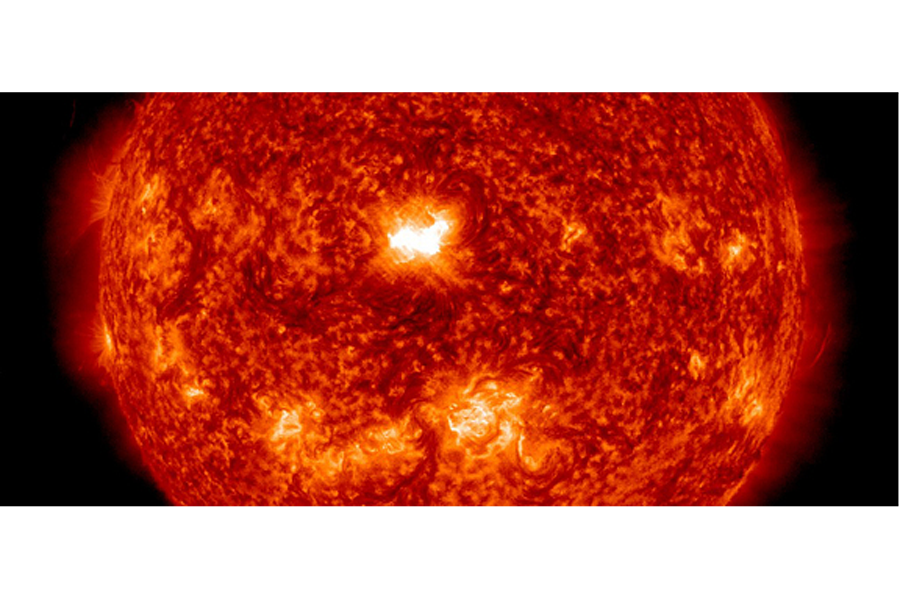Humongous solar flare: How to watch it live.
Loading...
You can get an up-close look at our dynamic sun, which has been putting on quite a show lately, during a live webcast today (Sept. 11).
The sun fired off a medium-strength flare on Tuesday (Sept. 9), then followed up with an Earth-directed X-class flare — the most powerful type — on Wednesday evening (Sept. 10). Both storms erupted from a sunspot known as Active Region 2158, which will be the focus of a webcast hosted today at 1 p.m. EDT (1700 GMT) by the online Slooh Community Observatory on its website: www.slooh.com.
You can also watch the solar flare webcast on Space.com, courtesy of Slooh.
Solar flares are bursts of high-energy radiation. Big ones are often accompanied by coronal mass ejections (CMEs), which send clouds of superheated solar plasma streaking through space at millions of miles per hour. CMEs that hit Earth can trigger intense geomagnetic storms, which in turn may temporarily disrupt GPS navigation, radio communications and power grids.
Wednesday's storm likely did produce a CME in addition to the X1.6 flare, experts with the National Weather Service's Space Weather Prediction Center said. If that's the case, the CME would also be aimed at Earth.
"What solar experts fear most is a recurrence of the huge coronal mass ejection events of 1921 and 1859," Slooh astronomer Bob Berman said in a statement.
"A government-sponsored panel in 2008 estimated that such a solar event today would likely destroy the U.S. electrical grid, inflict a staggering $1 to $2 trillion dollars worth of damage, and require over a year to repair," Berman added. "So it’s more than of mere academic interest to monitor and observe these violent events as they unfold. Plus, they're amazing to watch."
Thursday's show will originate from the Prescott Observatory in Arizona, whose special solar equipment is expected to give viewers great views at the sun and sunspot AR 2158, Slooh officials said. Berman, Slooh host Geoff Fox and Prescott Observatory owner Matt Francis will participate.
Warning: Never look directly at the sun through telescopes, binoculars or with your unaided eye without protective equipment. Astrononomers and solar observers use special solar filters to safely view the sun.
Follow Mike Wall on Twitter @michaeldwall and Google+. Follow us @Spacedotcom, Facebook orGoogle+. Originally published on Space.com.
- Powerful Solar X-Flare Pointed At Earth | Video
- The Sun's Wrath: Worst Solar Storms in History
- Anatomy of Sun Storms & Solar Flares (Infographic)
- Biggest Solar Flares of 2014: Sun Storm Photos
Copyright 2014 SPACE.com, a TechMediaNetwork company. All rights reserved. This material may not be published, broadcast, rewritten or redistributed.







